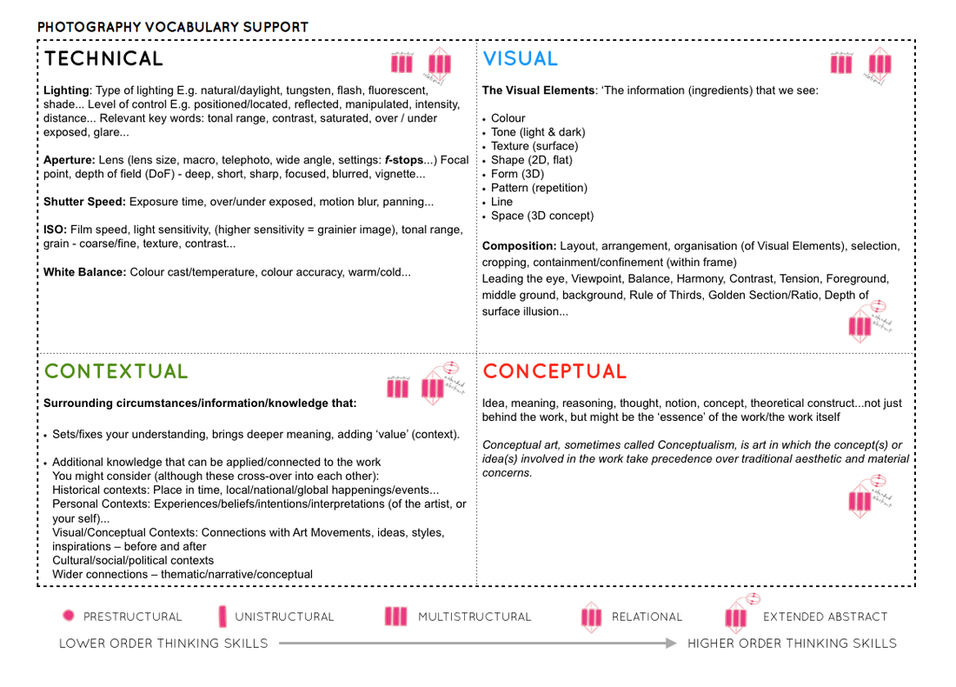
At the forefront of the photograph an old man can be seen. Natural light floods the background leaving dark shadows rising from beneath the man. He is looking menacingly down the lens of the camera while his hands, clasped together, help to hold up his tanned face. The camera has been positioned to be looking directly through the center of two dark grey pillars. The light from the back surrounds his face and is reflected along the side of his cheeks and down to his chin with dark shadows peeking from the creases of his mouth. In the background the symmetry is elongated with two trains on either side of the image. Dark grays and black can be seen dominating the bottom half of the photograph whereas brighter colours such as white, red, orange and blue can be viewed in the upper half. There are also leading lines that can be viewed coming up through Krupps arms leading to his eyes, this creates a triangular shape. These can also be seen leading from the edge of the light coming through the top of the photograph.
The man in the photograph looks cold and frightening but in reality he is harmless in that moment. His name is Alfred Krupp and During WWII him and his family helped the Nazis move people to concentration camps. This photo captures the man that he is, cold, dark and frightening.


















































































